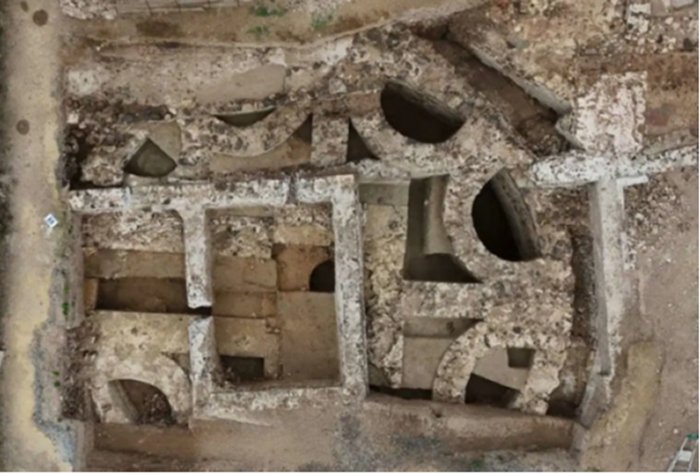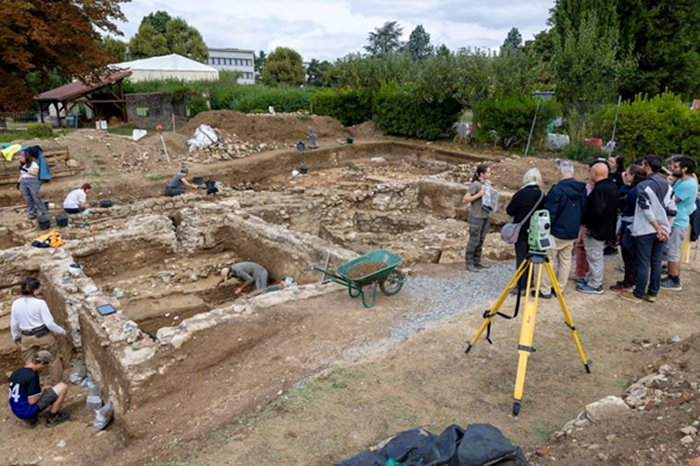Conny Waters – AncientPages.com – A team of archaeologists has discovered the remains of a large Roman mausoleum dedicated to an important figure in the Roman Empire. However, the identification of this person has yet to be determined, researchers say.
The discovery site is located in the town of Saint-Romain-en-Gal, with a population of 2,000, situated near Lyon, France.

The mausoleum unearthed in the town of Saint-Romain-en-Gal. Image credit: Julien Bourreau – Musée Gallo-Romain in Saint-Romain-en-Gal. France
There are only eighteen known mound mausoleums in France. However, archaeologists at the Musée Gallo-Romain in Saint-Romain-en-Gal say that this particular mausoleum stands out as the sole circular elevation building that remains in such a well-preserved state.
Constructed around A.D. 50, this structure has an internal diameter of 15 meters and lmost probably once stood over six meters tall. Its height ensured visibility to anyone passing through or arriving in the Roman colony of Vienne, especially those coming from the Rhone River. According to archaeologists, these dimensions indicate the significance of the individual buried here—a figure who was intended to remain influential and present in society even after death.
Giulia Ciucci, an archaeologist and the scientific director of the museum’s archaeological sites, explains that this individual was undoubtedly a member of the Empire’s aristocratic elite, and had a significant political position, with connections to imperial authority. Based on historical records, the mausoleum of Saint-Romain-en-Gal was, in fact, built on the model of that of Augustus in Rome (27 B.C.-14 A.D.), the first Roman emperor.

Image credit: Julien Bourreau – Musée Gallo-Romain of Saint-Romain-en-Gal
Martine Publié, vice-president of the Rhône department responsible for Culture, Tourism, Attractiveness, and Community Life, highlights the universal fascination with participating in excavations and witnessing discoveries firsthand. She notes that the 2025 excavation campaign will have a lasting impact on archaeology students involved and on visitors who had the opportunity to observe these historical findings live during the summer.
Giulia Ciucci concludes that upcoming studies will aim to uncover the identity of the individual buried at this site. In addition,
Further excavations are set to continue in collaboration with Aix-Marseille University, Marie-et-Louis-Pasteur University in Besançon, and the CNRS, and are scheduled for the summers of 2026 and 2027.
This summer’s archaeological excavations near the Northern Baths of Saint-Romain-en-Gal revealed three stores dating back to the 1st to 2nd centuries AD. These stores are part of a commercial building initially identified between 1989 and 1990. which included at least eight stores and featured a portico,.
Archaeologists found the evidence that the complex was destroyed by fire.
Two workshops containing tubs were evidently used for tools designed to compact woolen fabrics, a process that strengthens the material and can make it waterproof. This method was particularly applied to the white toga worn by citizens during civic activities. Additionally, a third workshop was discovered, featuring a kiln that could be used for glassmaking or baking.
The remarkable quality of these archaeological finds, along with the diverse uncovered craft activities will certainly help to imagine local commerce of this ancient place.
Source
Written by Conny Waters – AncientPages.com Staff Writer








